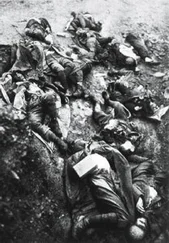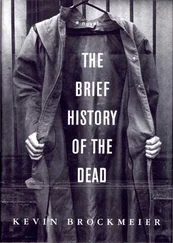Paul Simpson - A Brief History of the Spy
Здесь есть возможность читать онлайн «Paul Simpson - A Brief History of the Spy» весь текст электронной книги совершенно бесплатно (целиком полную версию без сокращений). В некоторых случаях можно слушать аудио, скачать через торрент в формате fb2 и присутствует краткое содержание. Город: London, Год выпуска: 2013, ISBN: 2013, Издательство: Constable & Robinson, Жанр: Прочая документальная литература, на английском языке. Описание произведения, (предисловие) а так же отзывы посетителей доступны на портале библиотеки ЛибКат.
- Название:A Brief History of the Spy
- Автор:
- Издательство:Constable & Robinson
- Жанр:
- Год:2013
- Город:London
- ISBN:9781780338910
- Рейтинг книги:3 / 5. Голосов: 1
-
Избранное:Добавить в избранное
- Отзывы:
-
Ваша оценка:
- 60
- 1
- 2
- 3
- 4
- 5
A Brief History of the Spy: краткое содержание, описание и аннотация
Предлагаем к чтению аннотацию, описание, краткое содержание или предисловие (зависит от того, что написал сам автор книги «A Brief History of the Spy»). Если вы не нашли необходимую информацию о книге — напишите в комментариях, мы постараемся отыскать её.
A Brief History of the Spy — читать онлайн бесплатно полную книгу (весь текст) целиком
Ниже представлен текст книги, разбитый по страницам. Система сохранения места последней прочитанной страницы, позволяет с удобством читать онлайн бесплатно книгу «A Brief History of the Spy», без необходимости каждый раз заново искать на чём Вы остановились. Поставьте закладку, и сможете в любой момент перейти на страницу, на которой закончили чтение.
Интервал:
Закладка:
In the United Kingdom, those in charge of MI6, the Secret Intelligence Service (SIS), saw the close of hostilities as a chance to put the service on a better footing, in much the same way that their colleagues at the Security Service, MI5, had needed to do at the start of the war.
Organized intelligence gathering has taken place on behalf of the English state ever since Tudor times: Thomas Cromwell, chief minister of Henry VIII, was in charge of agents reporting back from across Europe, while during the period Henry’s daughter, Elizabeth I, was on the throne, her private secretary, Sir Frances Walsingham, ran a network of fifty agents, and developed a highly effective system of interception — the precursor of both MI5 and MI6 today.
The perceived threat from Germany in the early years of the twentieth century led to the creation of a Secret Service Bureau by the Committee for Imperial Defence in 1909. There were multiple reports of German agents working in Britain, often covered in a very sensationalist way by the newspapers of the time. As the MI5 website recounts, the Weekly News offered £10 to readers to provide information on German agents to its ‘Spy Editor’; it was quickly overwhelmed with letters! Nor was it any secret that Kaiser Wilhelm was expanding the German military machine. The Bureau was therefore instructed to counter foreign espionage in the UK (the Home Section) and to collect secret intelligence abroad on Britain’s potential enemies (the Foreign Section). The Home Section was led by Army Captain Vernon G.W. Kell, while the Foreign Section was headed initially by Commander Mansfield Smith-Cumming RN — his habit of initialling his correspondence ‘C’ led to the use of that single letter for the head of the service, a fact which author Ian Fleming adapted when creating his fictional head of service, M, for the James Bond novels.
When they were requested by the Government to investigate the growth of the German Imperial Navy, Kell and Cumming agreed to split the Bureau into two different organizations: the Home Section became the Security Service (known as MI5 from 1916 onwards) and the Foreign Section became the Secret Intelligence Service (MI6). While MI5 operated against German spies in Britain — arresting over twenty agents before the outbreak of the First World War in August 1914 — MI6 set up networks in France and Belgium that would prove highly important during the four-year conflict.
With the German menace seemingly removed following the Treaty of Versailles, which ended the war, MI6 turned its attention to a troubling development: the rise of a new political creed following the 1917 Russian Revolution — Communism. Cumming saw the rise of international communism as a major threat to the security of Great Britain, and a lot of MI6’s attention during the twenties and thirties was devoted to the Comintern, the Soviet-dominated Communist International organization. The Comintern was established in 1919 to work by all available means, including armed force, for the overthrow of the international bourgeoisie and for the creation of an international Soviet republic as a transition stage to the complete abolition of the State. (The Soviets would also target MI6 in return, embedding one of their most important agents, Kim Philby, into the service: he would prove to be one of their best assets in the period immediately after the Second World War.)
MI5 was renamed the Defence Security Service in 1929, dropping the word ‘Defence’ from its title in 1931. Around the same time it was given responsibility for assessing all threats to the security of the UK — with the exception of Irish terrorists and anarchists, which stayed part of the police remit. (The service itself continued, and still continues, to refer to itself in shorthand as MI5, a convention adopted here.) During the period leading up to the Second World War, despite limited personnel, they dealt with the spy ring created by left-wing journalist William Norman Ewer (which led to the dismissal of various sympathizers at Scotland Yard), and leading member of the Communist Party of Great Britain and official of the League Against Imperialism, Percy Glading’s spy ring based at the Woolwich Arsenal in south-east London, which was sending blueprints to the Soviets.
The rise of Nazism unsurprisingly became an important part of both services’ remit during the thirties, with MI5 keeping a weather eye on British fascists, including Sir Oswald Mosley and his blackshirt organization, the British Union of Fascists. MI5 underwent a massive reorganization in April 1941 under the aegis of Sir David Petrie. Although it was discovered post-war that only 115 agents were targeted by the Nazi regime against Britain (all bar one of whom were captured by MI5, the exception committing suicide), there were thousands of vetting requests flowing through the service’s hands, as well as all the reports of potential ‘Fifth Column’ sympathizers who might assist the expected German invasion.
MI6 also had to carry out some drastic rethinking. Many networks of its agents were lost during the Nazi domination of Western Europe after the start of the Second World War, but subsequently many more civilians volunteered to cooperate with the service, providing invaluable information for the Allied forces. During this period, the service was formally known as MI6 (it had briefly been MI1(c) during the First World War, but had rid itself of this title post-war), partly as a flag of convenience and partly to emphasize the links with MI5.
The secret service was also responsible for the vitally important code-breaking work carried out at the Government Code and Cypher School at Bletchley Park, 40 miles north of London. The Germans believed that their vaunted Enigma code machine produced signals unreadable by anyone not in possession of a copy of the device, but in fact the experts at Bletchley Park were able to do so, and provided information, code-named ULTRA, which proved invaluable to the prosecution of the war.
A third organization was involved in covert (and not-so-covert tasks) during the war: the Special Operations Executive (SOE) carried out sabotage, bombing and subversive actions behind the enemy lines. Where MI6 provided the raw intelligence about troop movements, the SOE were actively haranguing the enemy. MI6 head Sir Stewart Menzies regarded them as ‘amateur, dangerous, and bogus’ but because they were the brainchild of Prime Minister Winston Churchill their operations continued. Some of their actions led to terrible revenge being wreaked by the Nazis: the assassination of SS deputy Reinhard Heydrich led to the extermination of 5,000 people as a reprisal. The life expectancy of an operative may have been judged in weeks, but they became feared by the forces in Occupied Europe. General Eisenhower would even comment that ‘The disruption of enemy rail communications, the harassing of German road moves and the continual and increasing strain placed on German security services throughout occupied Europe by the organised forces of Resistance, played a very considerable part in our complete and final victory.’
As the tide of the war began to turn in the Allies’ favour, the Foreign Office began to consider post-war plans. One suggestion in 1943 was that a unified Secret Service could be set up that combined MI5, MI6 and SOE into one organization, with branches covering Information, Security and Operations. Churchill didn’t approve of this, and after many discussions between the various interested parties, the Bland Report, formally titled ‘Future Organisation of the SIS’, suggested that the secret service ‘must start to build up a really secret organisation behind its existing, much too widely known, façade’.
The Bland Report covered all aspects of the service, including recruitment (‘If… the SIS does not succeed in attracting the right men, first-class results cannot possibly be forthcoming’), and stated bluntly that the main task was ‘to obtain by covert means intelligence which it is impossible or undesirable for His Majesty’s Government to seek by overt means’. The report also emphasized the need for clarity in the division of responsibility between MI5 and MI6, and suggested that SOE be wound up and operations handled by MI6. (The SOE weren’t made aware of this, since it was already clear they envisaged a role for themselves in peacetime Europe.)
Читать дальшеИнтервал:
Закладка:
Похожие книги на «A Brief History of the Spy»
Представляем Вашему вниманию похожие книги на «A Brief History of the Spy» списком для выбора. Мы отобрали схожую по названию и смыслу литературу в надежде предоставить читателям больше вариантов отыскать новые, интересные, ещё непрочитанные произведения.
Обсуждение, отзывы о книге «A Brief History of the Spy» и просто собственные мнения читателей. Оставьте ваши комментарии, напишите, что Вы думаете о произведении, его смысле или главных героях. Укажите что конкретно понравилось, а что нет, и почему Вы так считаете.












